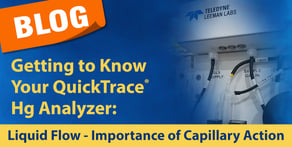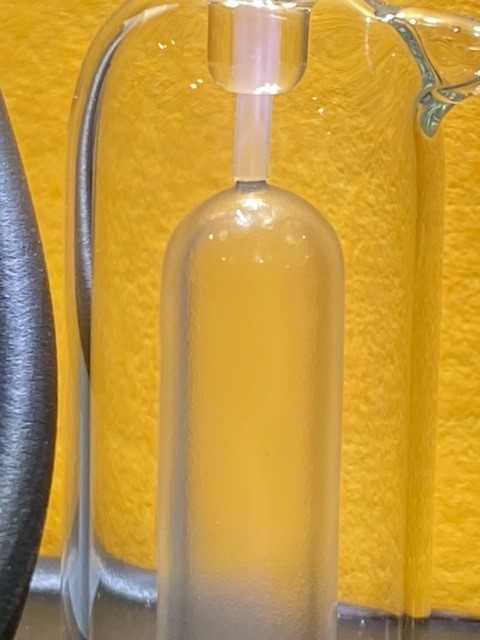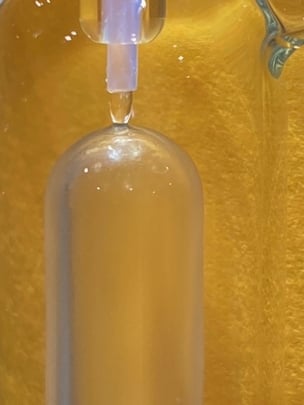 This is the second in a three-part series on the QuickTrace® .
This is the second in a three-part series on the QuickTrace® .
Part one is linked here, “Getting to Know Your QuickTrace®: The Effect of Liquid Flow — Pump Rate"
The importance of the moment the liquid sample is introduced to the gas liquid separator (GLS) via the capillary cannot be understated.The GLS is where the liquid flow meets the gas flow and the sample transitions from traveling in the liquid flow to being carried into the gas stream. How the liquid flow interacts with the GLS is highly reliant on the placement of the capillary above the GLS post.

Figure 1: Overview of GLS
Before even making it to the post, a leak between the capillary and the liquid mix line will result in sample loss, so a good tight fit for the capillary is important. Even with a good seal in place, the placement of the capillary from the GLS post can significantly change the flow of the liquid and the results of the run. If bent or not centered over the post, the capillary will allow the flow to favor one side of the GLS over the other. A heavy flow to one side can trap some of the mercury deeper in the flow, preventing the gas flow from interacting and carrying away the sample in its entirety. A thin, even layer of liquid around the GLS post gives the most consistent results.

Figure 2: Good capillary action over GLS |

Figure 3: Capillary set high over GLS |
Similarly, the height of the capillary from the post is just as important. If the capillary is set too close to the post, it can restrict the flow of liquid over the capillary or cause a splashing of liquid against the outer walls of the GLS when air makes its way through between samples. The restriction of the flow can result in lower peak height intensity, as a thinner layer of reacted sample will cover the post, while the splashing can cause samples to not have the same amount of repletion during a set of runs.
However, if the capillary is set too high above the post, the falling action of the liquid will allow for some areas of the post to be covered more thickly than others, and the uneven distribution of liquid sample will again create more inconsistent results during a run. When set properly, the liquid should “hug” the GLS just after leaving the end of the capillary and flow evenly over the sides with very subtle pulses visible over the walls.
This small detail is very easy to overlook. However, it plays a huge role in maintaining good, consistent results and should be given a quick check before each sequence.
This is part two of a three-part series.
For more information on our Mercury Analyzers, click the below.

